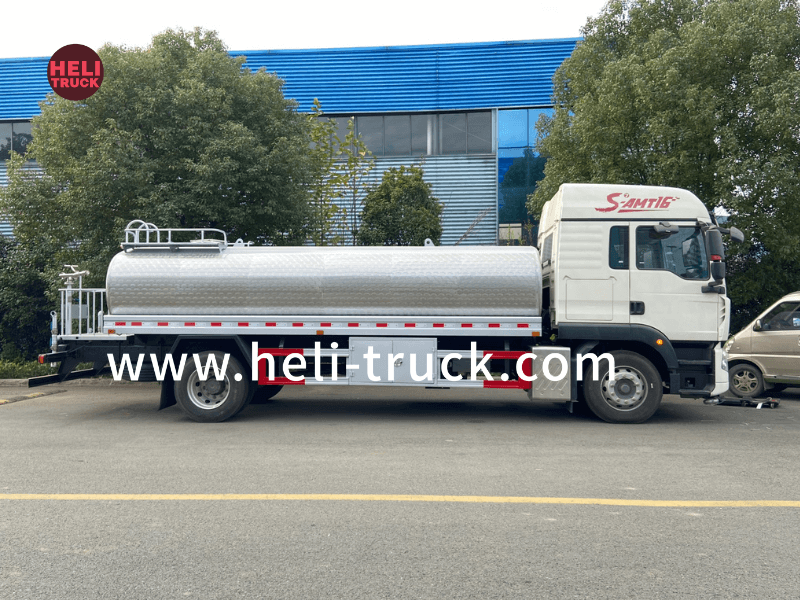Introduction
Garbage compactor trucks play a crucial role in waste management systems around the world. These specialized vehicles are designed to efficiently collect, compress, and transport various types of waste, helping to keep our cities clean and sanitary. In this detailed guide, we will explore the specifications of garbage compactor trucks, covering everything from chassis types and engine power to compaction mechanisms and storage capacities.
Chassis Types
Garbage compactor trucks come in a variety of chassis types, each suited to different operational needs. The most common chassis types used for compactor trucks include:
1. Rear Loader: Rear loader compactor trucks feature a loading hopper at the rear of the vehicle, where waste is manually or automatically loaded. These trucks are commonly used for residential waste collection in urban areas.
2. Front Loader: Front loader compactor trucks are equipped with a front-loading mechanism that allows for quick and efficient collection of large waste containers. These trucks are often used for commercial and industrial waste collection.
3. Side Loader: Side loader compactor trucks feature a loading mechanism on the side of the vehicle, making them ideal for narrow streets and areas with limited access. These trucks are commonly used for curbside waste collection.
Engine Power
The engine power of a garbage compactor truck plays a crucial role in determining its performance and efficiency. The engine power is typically measured in horsepower (HP) or kilowatts (kW), with higher power ratings allowing the truck to handle heavier loads and operate more smoothly. Common engine power specifications for garbage compactor trucks range from 150 HP to 400 HP, depending on the size and capacity of the vehicle.

Compaction Mechanism
The compaction mechanism is a key component of a garbage compactor truck, responsible for compressing waste to maximize storage capacity and reduce the number of trips required for disposal. There are two main types of compaction mechanisms used in compactor trucks:
1. Blade Compactor: Blade compactors use a hydraulically operated blade to push waste into the storage compartment of the truck. The blade moves back and forth to compress the waste, allowing for efficient compaction and increased payload capacity.
2. Auger Compactor: Auger compactors feature a rotating screw-like mechanism that pushes waste towards the rear of the truck for compaction. This design is particularly effective for handling bulky or irregularly shaped waste, ensuring thorough compaction and minimal air pockets.
Storage Capacities
The storage capacity of a garbage compactor truck refers to the volume of waste that the vehicle can hold before requiring disposal. Storage capacities are typically measured in cubic yards or cubic meters, with larger capacities allowing the truck to collect more waste per trip. Common storage capacity specifications for compactor trucks range from 10 cubic yards to 30 cubic yards, depending on the size and configuration of the vehicle.
Hydraulic System
The hydraulic system of a garbage compactor truck is responsible for powering the compaction mechanism, lifting mechanisms, and other essential functions of the vehicle. The hydraulic system consists of a hydraulic pump, hydraulic fluid reservoir, control valves, and cylinders, all working together to provide the necessary power and control for the compactor truck. The hydraulic system's capacity and efficiency are critical factors in determining the overall performance and reliability of the vehicle.
Control Systems
Modern garbage compactor trucks are equipped with advanced control systems that allow operators to efficiently manage the compaction process and other vehicle functions. These control systems typically include electronic controls, touch-screen interfaces, and remote monitoring capabilities, providing operators with real-time data and diagnostics to optimize performance and productivity. Some compactor trucks also feature automated compaction cycles and load-sensing technology to improve efficiency and reduce operator fatigue.
Safety Features
Safety is a top priority in the design and operation of garbage compactor trucks, with various safety features incorporated to protect operators, pedestrians, and other road users. Common safety features found in compactor trucks include:
1. Rearview Cameras: Rearview cameras provide operators with a clear view of the rear of the vehicle, helping to prevent accidents and collisions during reversing maneuvers.
2. Water tank truck cleaning Stop Buttons: Emergency stop buttons allow operators to quickly halt the compaction process in case of an emergency or malfunction, ensuring the safety of personnel and equipment.
3. Overload Warning Systems: Overload warning systems alert operators when the compactor truck reaches its maximum capacity, preventing overloading and potential safety hazards.
Maintenance Requirements
Proper maintenance is essential to ensure the optimal performance and longevity of garbage compactor trucks. Regular maintenance tasks for compactor trucks include:
1. Hydraulic System Checks: Inspecting hydraulic hoses, fittings, and fluid levels to ensure proper functioning of the hydraulic system.
2. Compaction Mechanism Inspection: Checking the blades, augers, and other components of the compaction mechanism for wear and damage, and replacing as needed.
3. Electrical System Testing: Testing the control systems, lighting, and other electrical components of the vehicle to ensure proper operation.
Conclusion
Garbage compactor trucks are essential vehicles in waste management operations, offering efficient and reliable solutions for waste collection and transport. By understanding the specifications and capabilities of compactor trucks, operators and fleet managers can make informed decisions when selecting and operating these vehicles. From chassis types and engine power to compaction mechanisms and safety features, the specifications of garbage compactor trucks play a critical role in their performance and effectiveness in managing waste and maintaining clean and sustainable urban environments.
